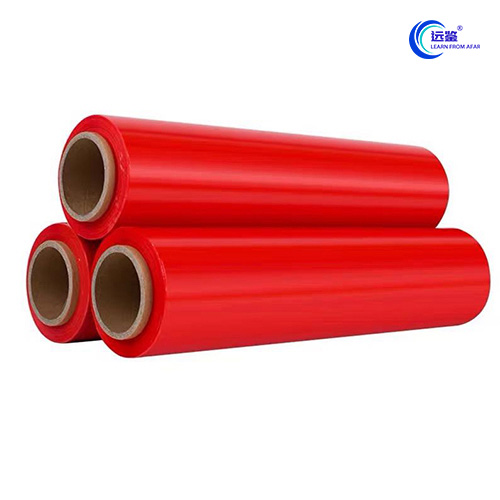Color stretch film
When we use stretch film, we need to understand some of its related instructions, as there are various packaging materials on the market. In order to choose a more suitable stretch film product, we must have a systematic understanding of stretch film products to know the performance advantages of stretch film. Below, I will briefly introduce it.
1、 Size, specifications, and appearance
The size and specifications of stretch film are the basic specifications when customers place orders, which specify the width deviation, thickness deviation, core length deviation, inner diameter deviation, and film quality deviation of stretch film that are suitable for the actual situation in China. The appearance requirements of stretch film are an important part of China's product standards, which require the flatness of broken heads, bubbles, punctures, ruptures, hard blocks, fisheyes, and films.
2、 Tensile strength and elongation at break
The tensile strength and elongation at break, also known as tensile performance, are important indicators of the tensile film. The width is 15mm, the distance between the clamping heads of the tensile testing machine is 50mm, the gauge distance is 50mm, and the test speed is 250mm/min ± 25mm/min. The use of elongated specimens does not require an extensometer, which also avoids the defect of fracture caused by the friction effect of the extensometer on the thin tensile film.
3、 Water vapor permeability
In order to characterize whether the film can protect the product from moisture or its absorption in marine or humid environments, that is, the wrapping sealing performance. The detection of water vapor permeability is very important. The water vapor permeability is tested using the GB/T 1037-1988 plastic film standard and the sheet moisture permeability test method.
4、 Physical and mechanical properties
The physical and mechanical properties of transport packaging films are mainly defined as technical indicators such as tensile strength, elongation at break, viscosity, permanent deformation, elastic recovery, tensile retention, f-force value, penetration resistance, mass deviation per unit area, transmittance, haze, and water vapor permeability.
5、 Other actual indicators
The specific testing methods for tensile films developed by the ASTM organization in the United States of America include viscosity, tensile retention, permanent deformation, elastic recovery, and wear resistance.
Stretch film is widely used in industries such as foreign trade, papermaking, hardware, plastic chemicals, building materials, food, etc. It mainly uses its good elasticity and viscosity to package goods, which is relatively safe and reliable. The application of stretch film is also more convenient and simple, and will not affect the quality of the product. It will not be pasted twice, so it has more advantages in use.


